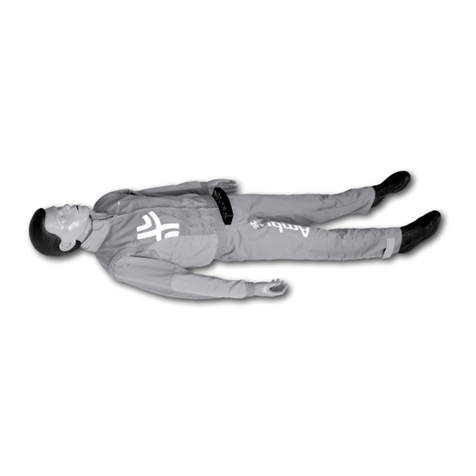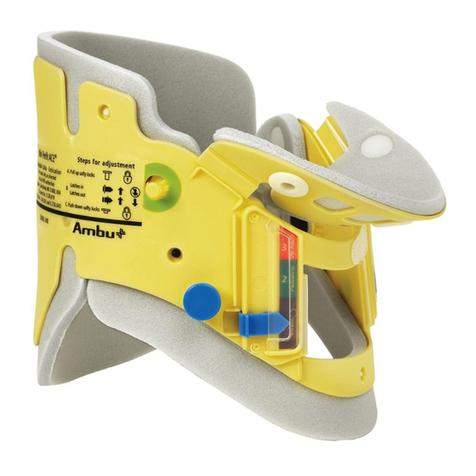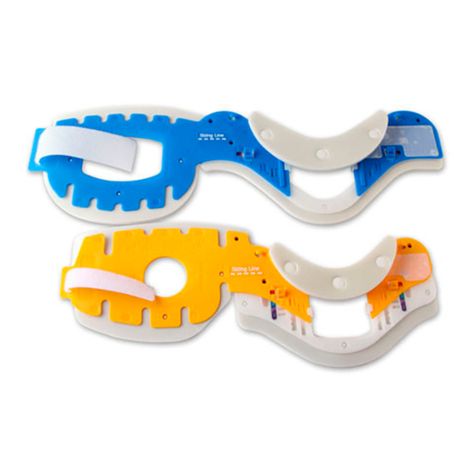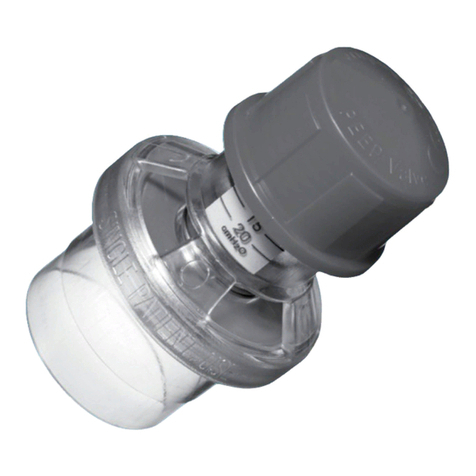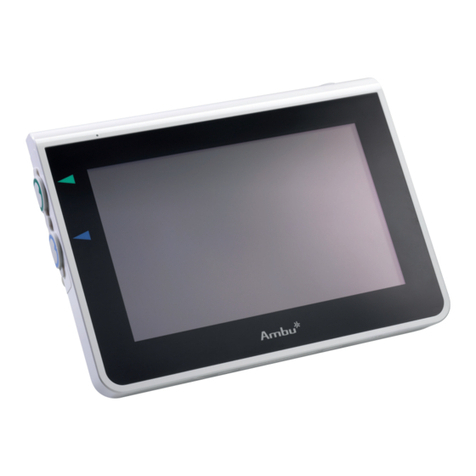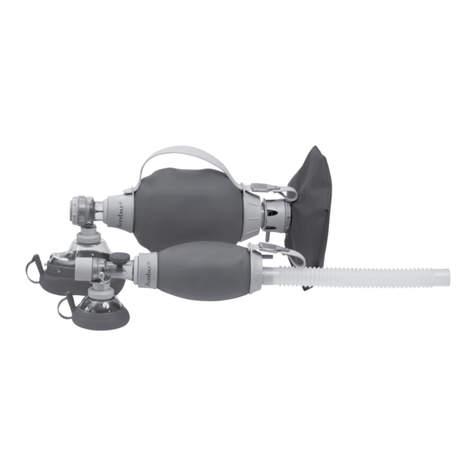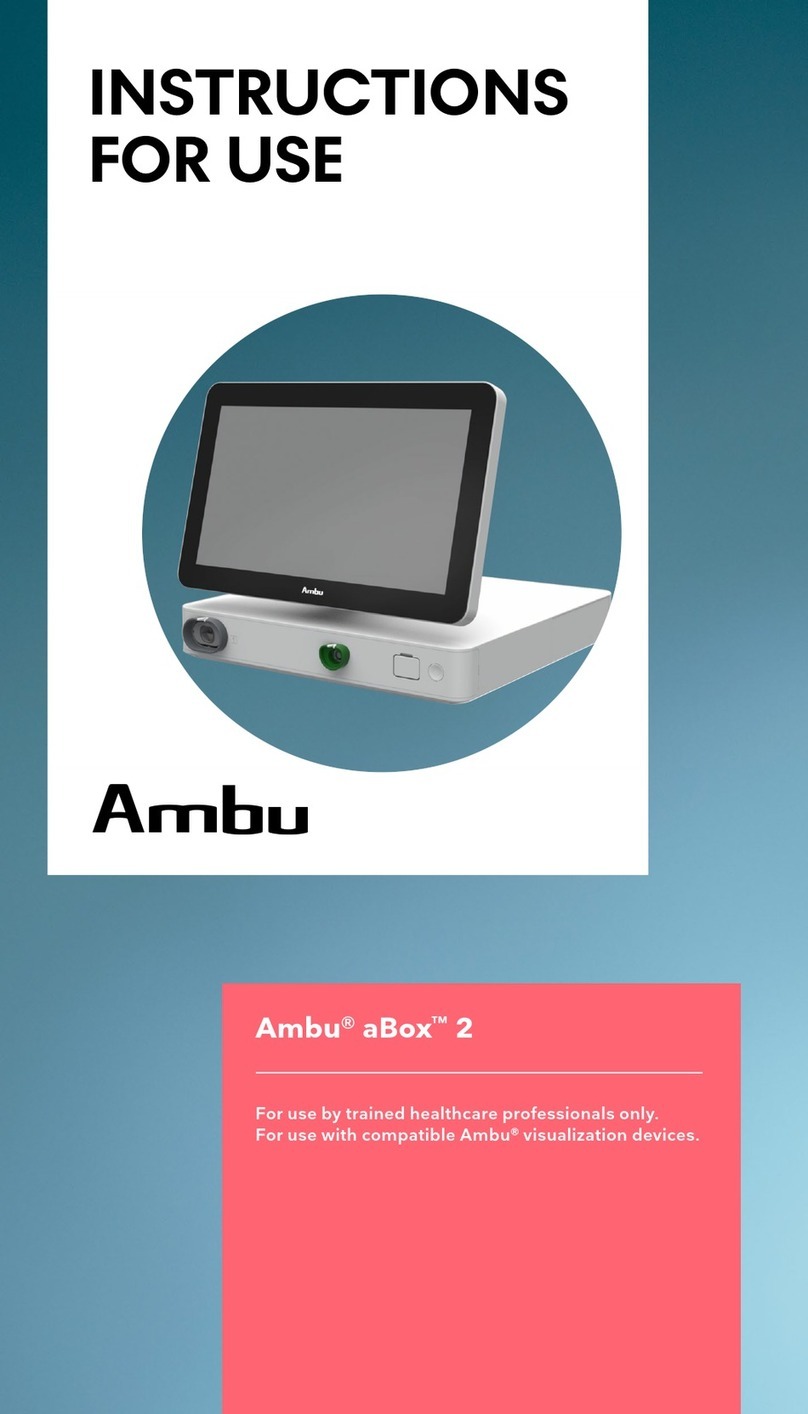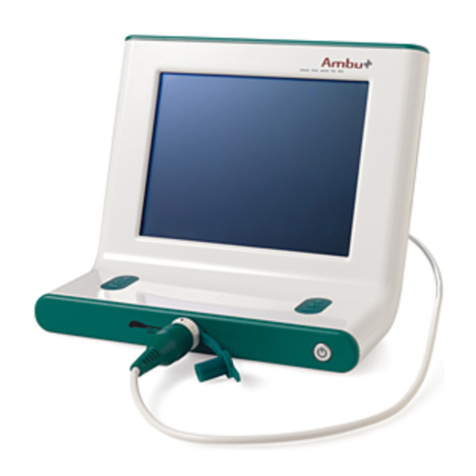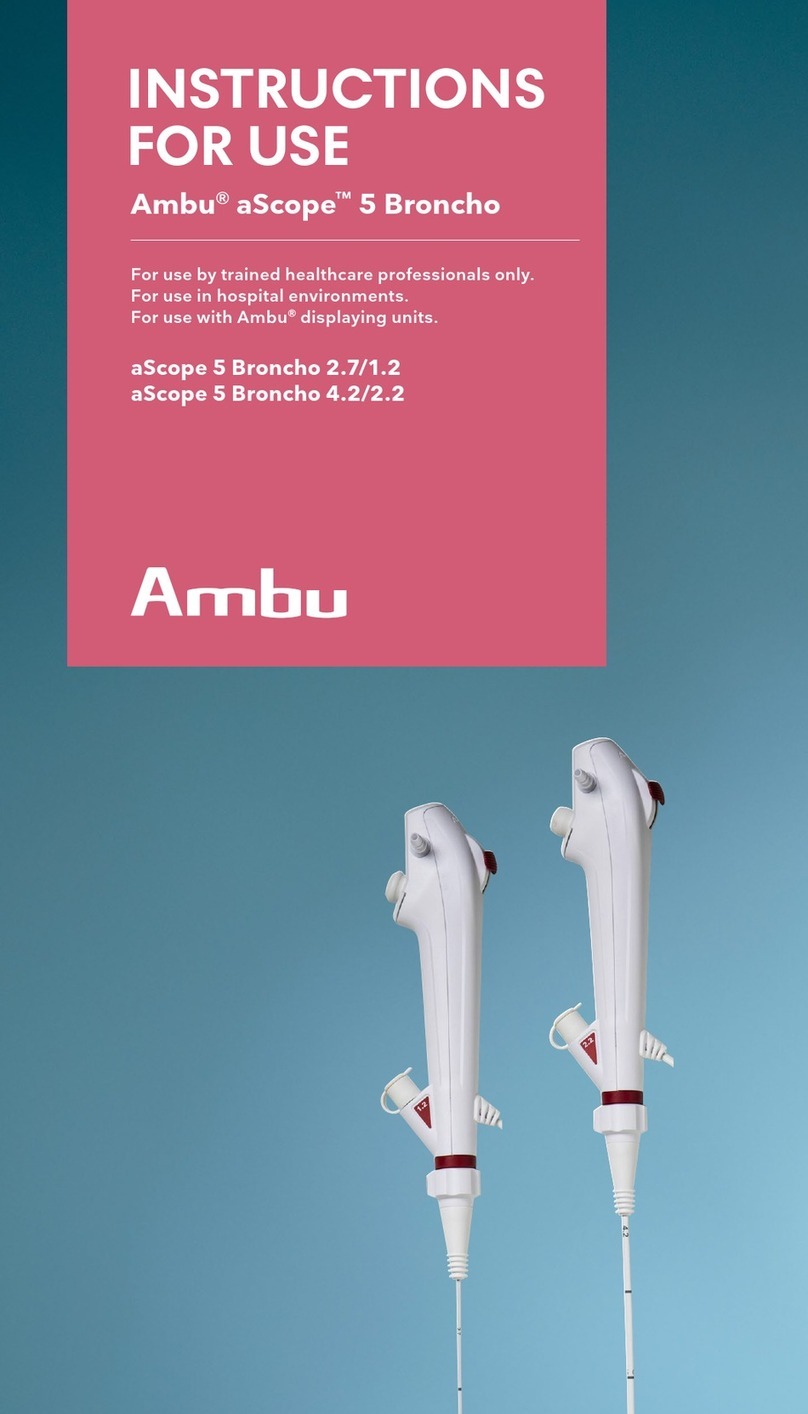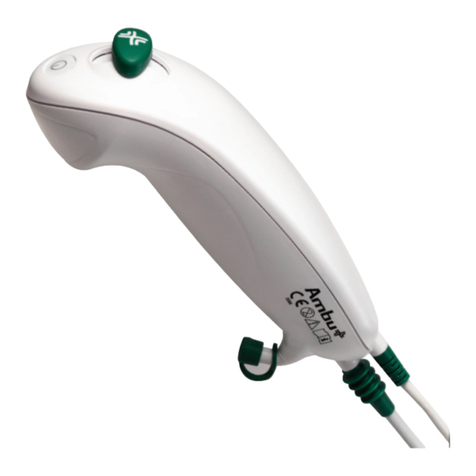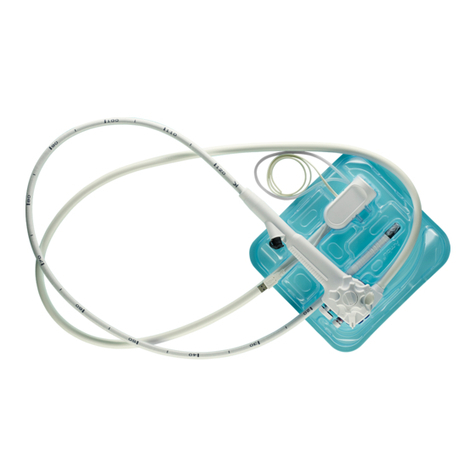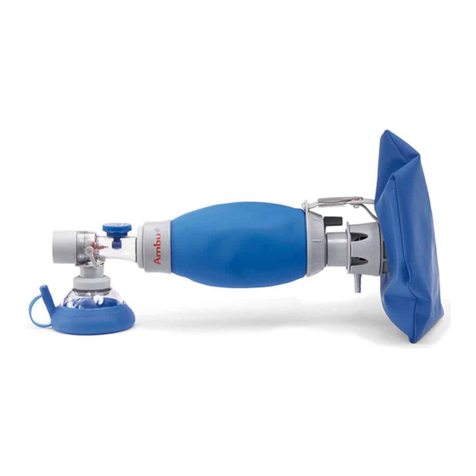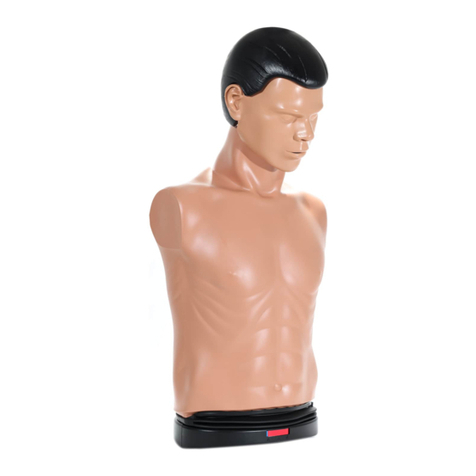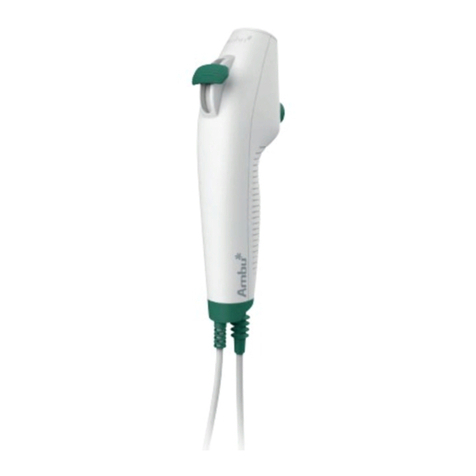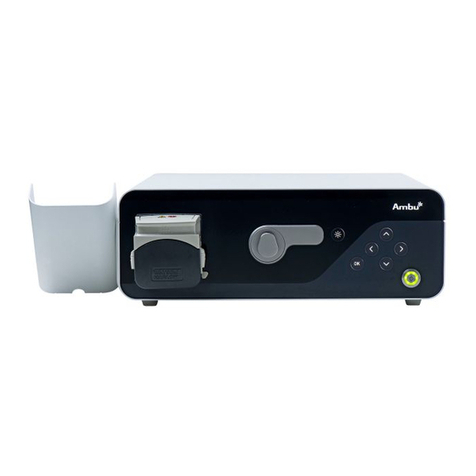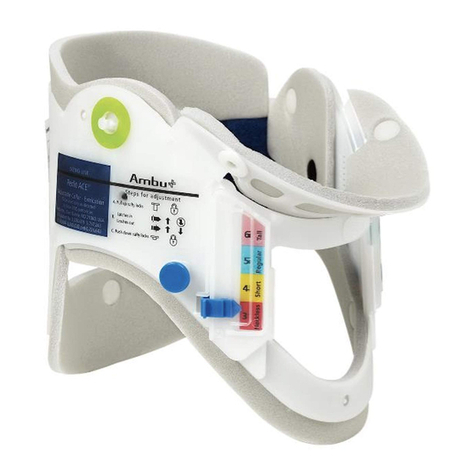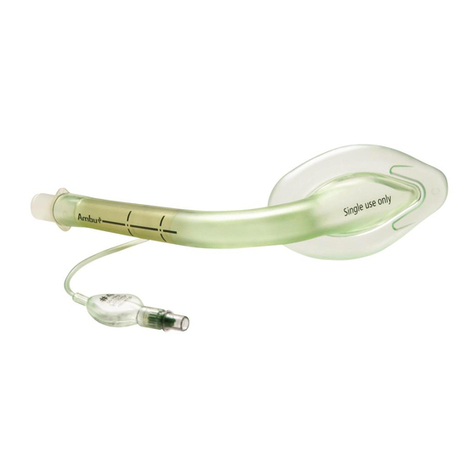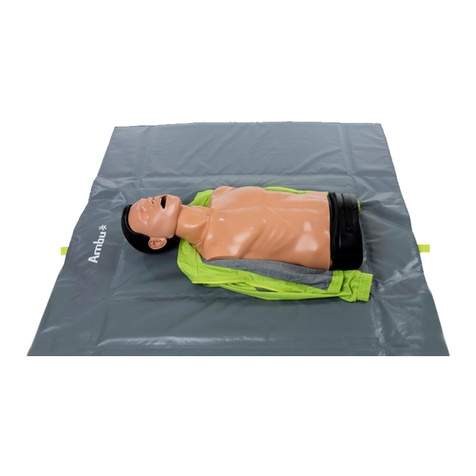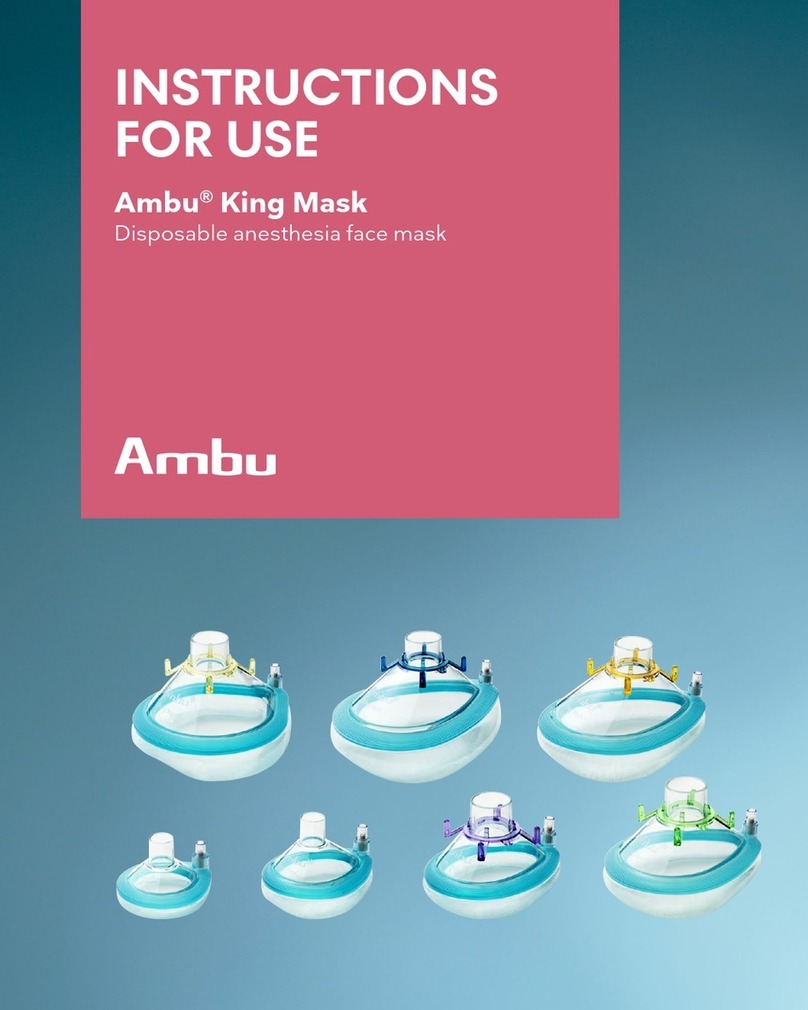8
English
Detergents and chemical disinfectants
There are a wide range of detergents and chemical disinfectants avail-
able on the market. Use only detergents or chemical disinfectants that
are compatible with the materials of the resuscitator. Otherwise, the life
of the equipment may be reduced. See the materials list in Section 3.
Follow the manufacturer's guidelines for dilution and exposure time of
the detergent or the chemical disinfectant. Agents containing phenol
should be avoided.
On request, information on the compatibility of a selection of deter-
gents and chemical disinfectants with the materials of the resuscitator
is provided by the nearest Ambus dealer or Ambu A/S.
Note: Avoid cleaning the product with agents containing phenol.
Phenol causes rapid wear and deterioration of the materials or a
reduced life of the equipment.
Note: Immediately remove all detergent or disinfectant residues from
the resuscitator. These residues may result in rapid wear or a reduced
life of the device.
Cleaning, disinfection and sterilisation procedure
The following items should be followed. Use the methods that are
suitable for the individual parts as indicated in the table above.
7.1. Disassembly of the resuscitator
The resuscitator must always be disassembled before cleaning as shown in
}.
Note: Do not attempt to disassemble the patient connector from the
patient valve (permanently assembled).
Note: The parts should not be further disassembled than shown in }.
See qfor further information.
Removing the supporting strap: Disengage the strap at the back of
the transparent nameplate cover as shown in Fig. e.
Pull the cap over the strap and remove the nameplate. Pull the strap
through the slot. Pull the strap through the slot in front of the connector.
7.2. Cleaning of parts
Manual washing or automatic washing machine
Wash the parts in water using a detergent that is compatible with the
materials of the resuscitator. See Section 3. Rinse all parts thoroughly
in clean water to remove all detergent residues.
If the exterior faces of the resuscitator bag are to be cleaned and/or
disinfected, check that the detergent and/or disinfectant used is com-
patible with the materials of the resuscitator. Make sure that all
residues are removed completely by rinsing with clean water. If the
residue is allowed to dry on the resuscitator, the life of the materials
may be reduced.
An automatic washing machine with a programme for washing anaes-
thetics equipment is applicable.
7.3. Disinfection and/or sterilisation
Select heat treatment or chemical disinfection according to local prac-
tice for disinfection and the table of applicable methods.
Washing machine - heat disinfection programme:
Automatic washing machines designed for medical equipment are
usually equipped with heat disinfection programmes.
Boiling: Use clean water - heat the parts, and boil them for 10 minutes
to disinfect them.
Chemical disinfection (e.g. Cidex, chemical with sodium
hypochlorite, etc.): Follow the manufacturer's guidelines for dilution
and exposure time of the chemical disinfectant. The parts of the resus-
citator are thoroughly rinsed with clean water to remove all residues
following contact with the chemical disinfectant.
